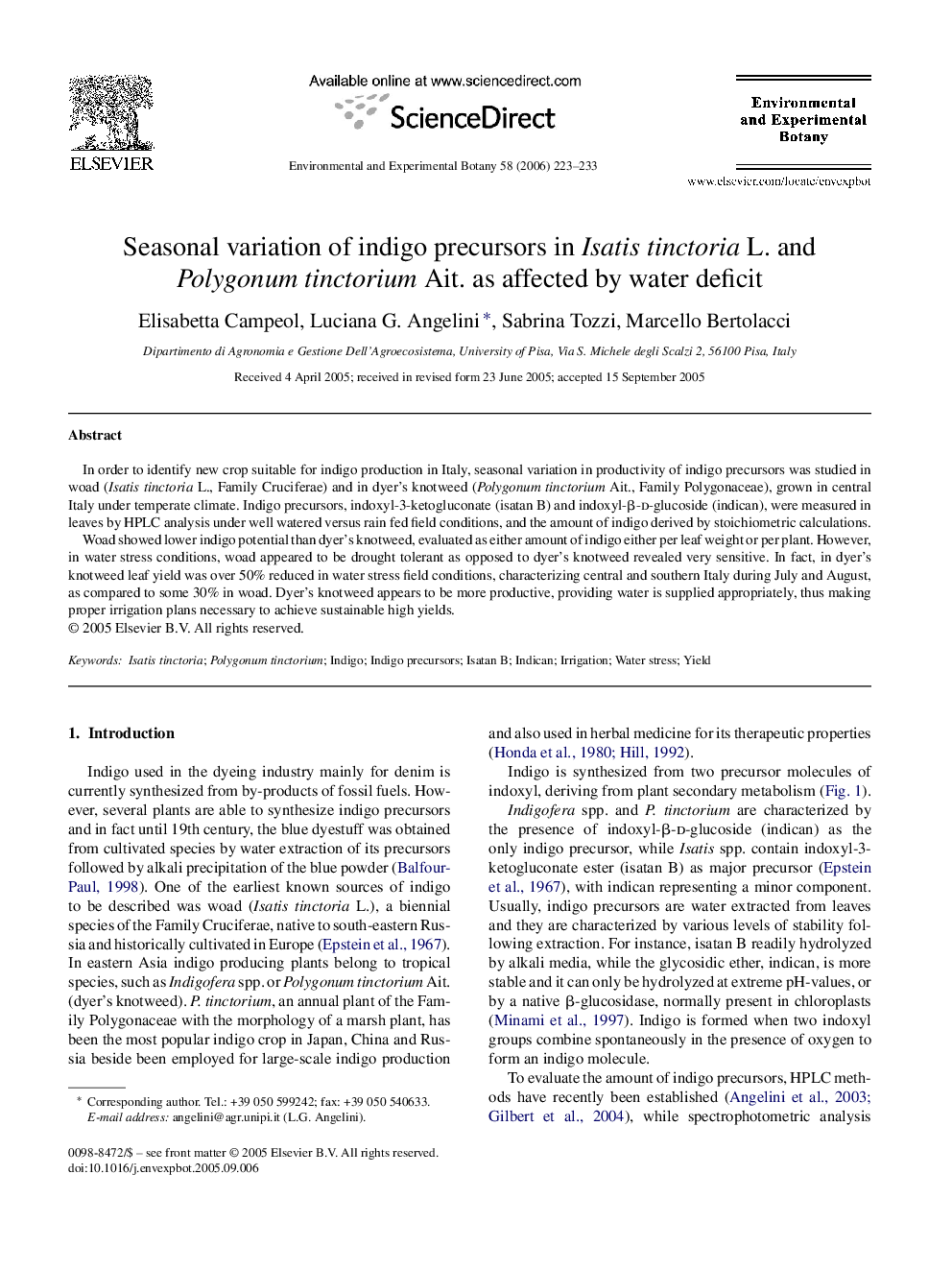| Article ID | Journal | Published Year | Pages | File Type |
|---|---|---|---|---|
| 4555662 | Environmental and Experimental Botany | 2006 | 11 Pages |
In order to identify new crop suitable for indigo production in Italy, seasonal variation in productivity of indigo precursors was studied in woad (Isatis tinctoria L., Family Cruciferae) and in dyer's knotweed (Polygonum tinctorium Ait., Family Polygonaceae), grown in central Italy under temperate climate. Indigo precursors, indoxyl-3-ketogluconate (isatan B) and indoxyl-β-d-glucoside (indican), were measured in leaves by HPLC analysis under well watered versus rain fed field conditions, and the amount of indigo derived by stoichiometric calculations.Woad showed lower indigo potential than dyer's knotweed, evaluated as either amount of indigo either per leaf weight or per plant. However, in water stress conditions, woad appeared to be drought tolerant as opposed to dyer's knotweed revealed very sensitive. In fact, in dyer's knotweed leaf yield was over 50% reduced in water stress field conditions, characterizing central and southern Italy during July and August, as compared to some 30% in woad. Dyer's knotweed appears to be more productive, providing water is supplied appropriately, thus making proper irrigation plans necessary to achieve sustainable high yields.
